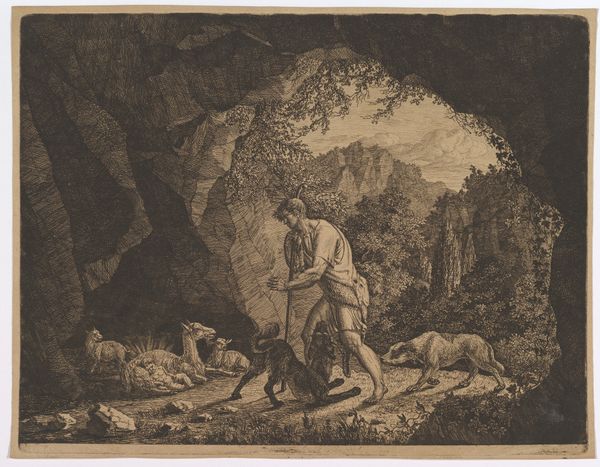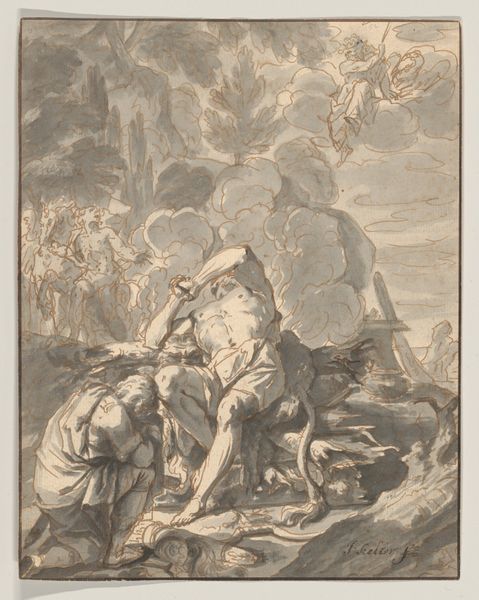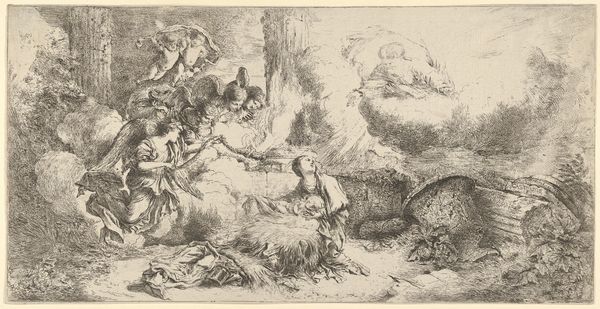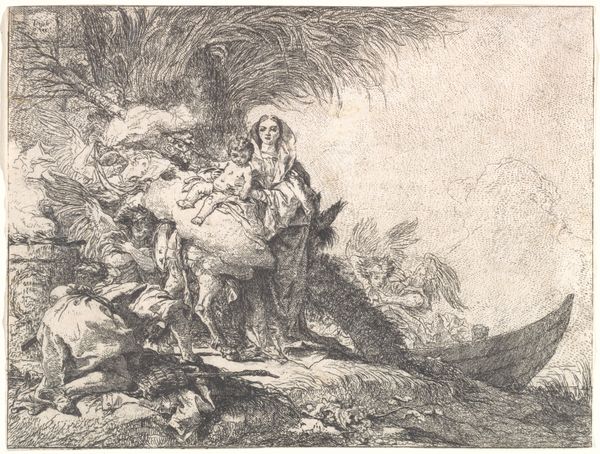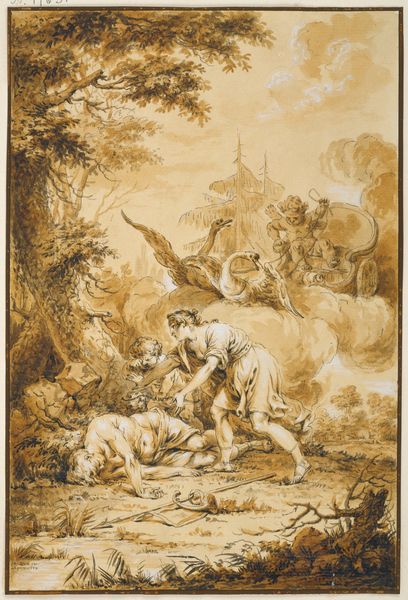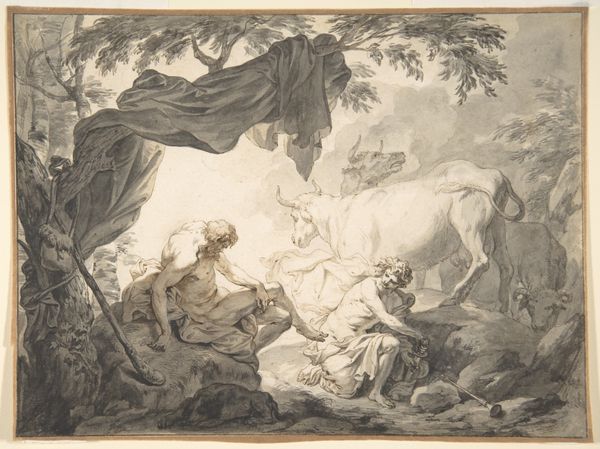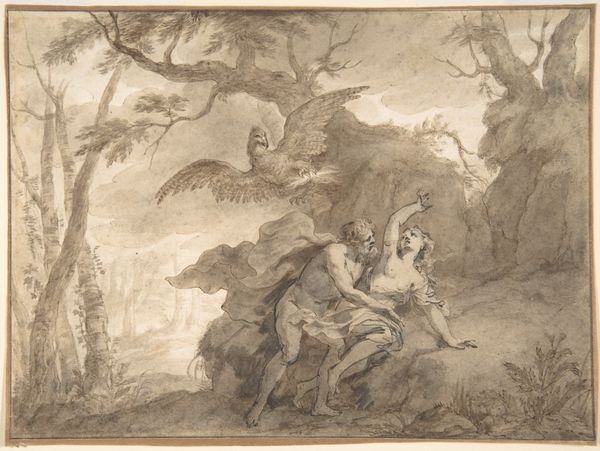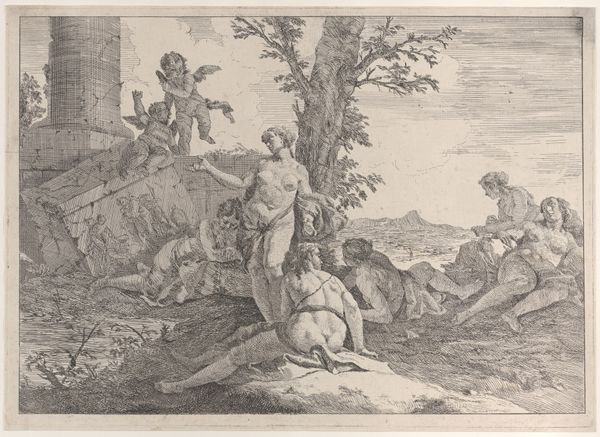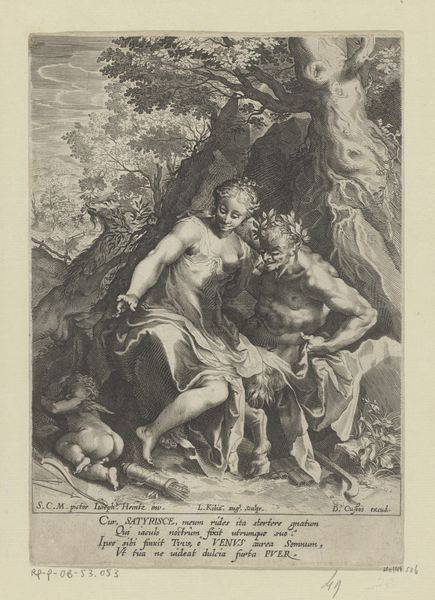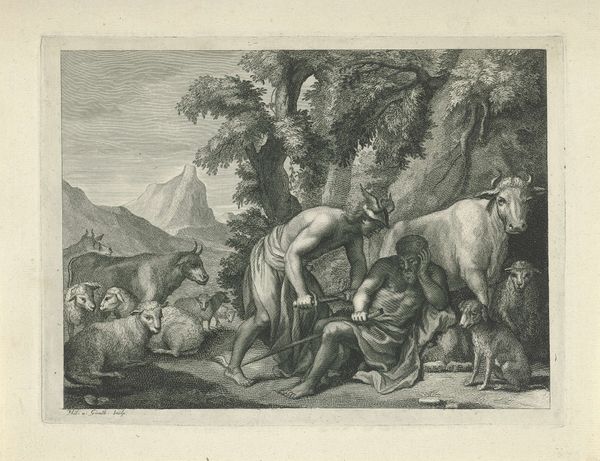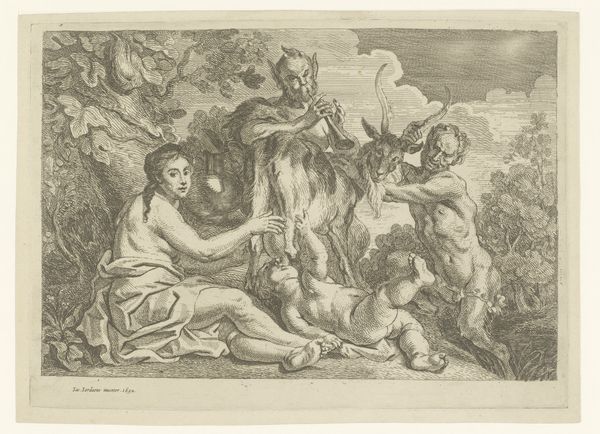
painting, oil-paint, canvas
#
narrative-art
#
baroque
#
painting
#
oil-paint
#
landscape
#
figuration
#
oil painting
#
canvas
#
history-painting
Dimensions: 50.5 cm (height) x 65 cm (width) (Netto)
Curator: Lieven Mehus’s *Moses and the Burning Bush*, dating from about 1645 to 1691. Editor: My word, the drama of the chiaroscuro! It feels like a whispered secret suddenly illuminated. The landscape nearly swallows the figures, but then this intense light erupts. It’s almost operatic, no? Curator: Indeed. Notice the artist’s masterful command of Baroque aesthetics. Observe the strategic deployment of light—how it sculpts form, directs the gaze. The *repoussoir* of the foreground sheep guides the viewer into the pictorial space and eventually up to God’s figure appearing from the fiery bush in the upper left. Editor: The sheep almost seem oblivious, or maybe that one in the middle is giving Moses the side-eye! Seriously though, this isn’t some static, reverent pose; there's palpable unease in Moses’s posture and facial expression. He's hesitant, overwhelmed, not your typical stoic hero. Curator: That’s astute. Mehus deliberately eschews idealization, rendering Moses in a distinctly human guise, in marked contrast to the divine manifestation above. We might read this dialectic as underscoring the inherent tension between mortal agency and divine will that sits at the narrative’s core. The overall composition employs asymmetry to destabilize a classical, balanced approach, thereby intensifying the drama of the encounter. Editor: Exactly! It's less about the pronouncement and more about the messy, awkward moment when a regular guy is confronted by something immense. Plus, that burning bush—talk about a visual metaphor for transformation and, well, burning away the old! I imagine it smelled of sulphur and scorched earth… and revelation. Curator: An intriguing olfactory interpretation. However, from a purely structural perspective, the incandescent light emitted serves a dual function— illuminating Moses while simultaneously functioning as a visual correlative for divine presence within a pictorial system founded on symbolic representation. Editor: Okay, I can’t argue with that, professor! Even when viewing paintings depicting well known Biblical episodes such as *Moses and the Burning Bush*, I love encountering depictions where the artist has attempted to tap into their most vulnerable and human side during moments of existential questioning. That raw humanity gets me every time! Curator: An important insight. Ultimately, it prompts one to reconsider familiar tropes anew and reinvest them with critical meaning, while acknowledging their formal attributes within the larger Baroque style and its function as part of narrative history painting.
Comments
No comments
Be the first to comment and join the conversation on the ultimate creative platform.


